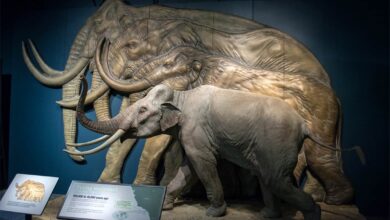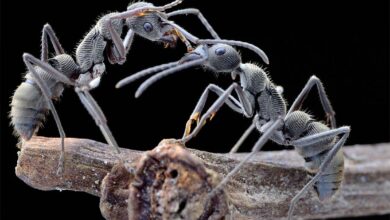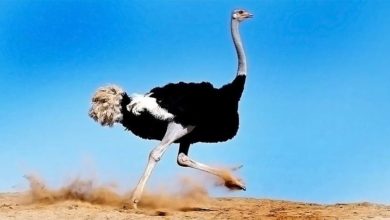Argentavis, Giant Teratorn – (Argentavis magnificens)
The largest flying bird in the history of the world
Millions of years ago everything was in XXL size, even the modern giant flying birds – Andean condors (Vultur gryphus) would look more like little pigeons when compared to the largest bird ever. Argentavis is also called Giant Teratorn. Only Pelagornis sandersi could be as big or slightly bigger.
Get ready to be amazed by the story of Argentavis magnificens, the largest flying bird to ever grace the skies. This incredible creature lived around 6 million years ago in South America, and its massive wingspan of up to 7 meters put even the modern-day condor to shame. Despite being long extinct, the sheer size and strength of this bird have captured the imagination of scientists and enthusiasts alike. But what do we really know about this extinct species? In this article, we delve into the mysteries surrounding Argentavis magnificens, from its discovery and anatomy to its behavior and habitat. Join us on a journey back in time to uncover the secrets of this fascinating bird.
Classification
- Kingdom: Animalia
- Phylum: Chordata
- Class: Aves
- Order: Cathartiformes (disputed)
- Family: †Teratornithidae
- Genus: †Argentavis
- Species: †Argentavis magnificens
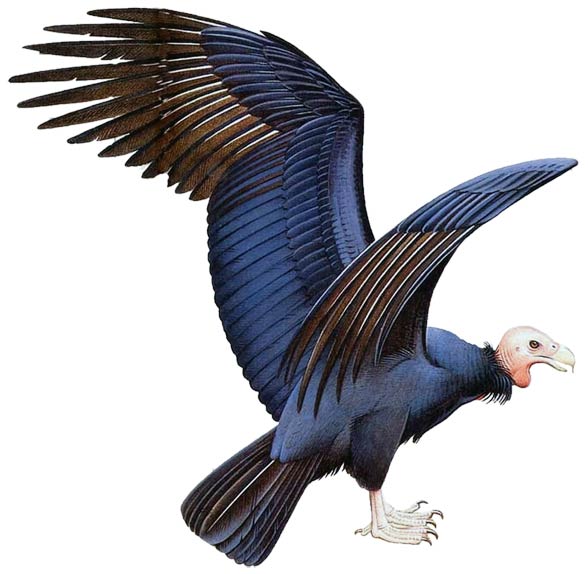
Range and dating
The remains of the Earth’s largest bird were discovered in central and north-east Argentina. It has been estimated that it lived about 6 million years ago in the Miocene epoch.
Characteristics
Argentavis was an undeniably large bird, its torso was about 1.26 m (4.13 ft) long, its height was located probably in the range of 1.7 – 2 m (5.6 – 6.5 ft), with a wingspan reaching 7 meters (23 ft), weighing up to 70 – 78 kg (154 – 172 lb).
To compare, presently the widest wingspan among birds is 3.7 meters (12.1 ft), the wandering albatross (Diomedea exulans) being the title holder. Another giant bird close to the record in this category is the Andean condor, which is the closest relative for Argentavis, reaching a wingspan of 3.2 meters (10.5 ft) and weighing about 15 kg (33 lb). The sarus crane (Antigone antigone) is presently the tallest flying bird in the world, being as tall as Argentavis in its time. Even the heaviest bustards or swans are not even close in terms of weight to the gigantic bird from Argentina.
Only the pterosaurs could be leveled opponents for the Argentavis, yet our dear readership already knows that as they are familiar with the king of the skies – Quetzalcoatlus.
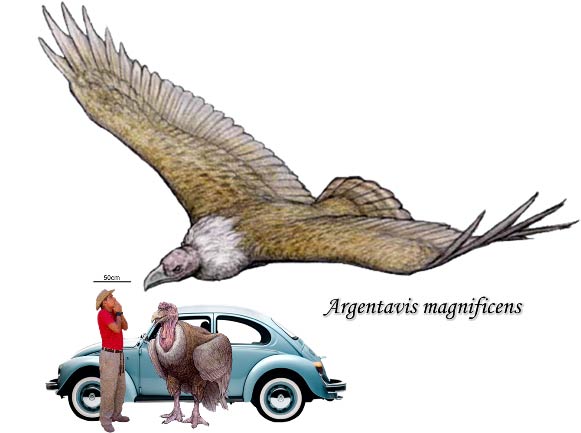
Manner of flying
Researchers are not entirely sure how such a massive animal could take off the ground. Throughout the years a few theories were proposed: the small sternum suggests that the muscles that are most vital for flying were reduced when compared to other flying birds. This means that despite their vast area and the bird’s wingspan, they were not strong enough to be flapped as many birds’ wings are.
Air currents
As a result, it is possible that this animal’s flight was based on currents, like a glider, whilst the wing flapping was needed only during takeoff and landing.
As an animal adapted to gliding flights, it surely took advantage of wind and current changes, being able to manipulate the flight altitude and speed through updrafts (rising air currents). Through this technique, the bird could save substantial amounts of energy.
It is also possible that the air currents vital for takeoffs and the giant size of its wings caused the bird to hit the ground with its flapping flight feathers during the very first seconds of flight. In such case, the theory engaging rapid wing flapping during takeoff seems somehow questionable.

However, it is more likely for Argentavis to spread its wings in an upright position, waiting for adequate updrafts. In such a position, it would not grow tired, as its whole wings were surrounded by airflow and the moment the bird caught a right current, it leaped up thanks to its strong legs.
The starting process is one of the most dangerous (if not THE most dangerous) aspects of flying – much depends on the body position just before takeoff. If all went well, Argentavis flew horizontally-orientated, flapping its wings only occasionally to benefit most from the air currents.
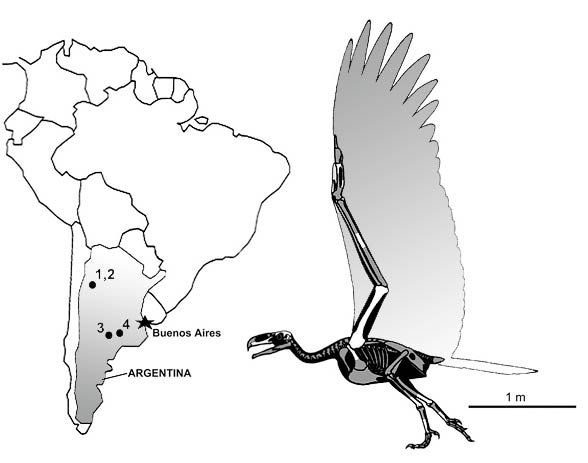
Behavior
Its dietary preferences remain a mystery even today, yet the bird was a carnivore, presumably. However, it was not an active hunter, as e.g. eagles, for their body shape and relatively weak breast muscles would not allow it. Conceivably it feasted on carrion, just like condors.
Scavenging would also require the bird to be proactive, which would force it to store reserves of calories to survive. Large size has become the root of many problems, as numerous potential opponents awaited it on the ground – e.g. predatory marsupials from the Thylacosmilus genus.
Nevertheless, it is worth remembering that the largest Miocene predators from South America were other birds – flightless seriema birds from the Phorusrhacidae family (commonly known as terror birds). These birds had lost their ability to fly, yet the largest members of the family – Phorusrhacos or Kelenken could hunt for a truly massive prey, which resulted in considerable amounts of carrion – a perfect opportunity for Argentavis.

Breeding and longevity
Although nobody can confirm with all certainty what was the life of this gigantic bird like, its size and probably a stationary lifestyle (in comparison to lives of active predators) suggest that it had a very long life expectancy.
Although no one can say for sure what the life of this huge bird was like, its large size and perhaps sedate lifestyle compared to active predators suggest that it was a long-lived animal.
Due to its size it had no natural enemies in the air, even the large or medium-sized land predators could threaten it individually. Therefore its fiercest opponent could be the above mentioned large seriemas, yet Argentavis could flee from danger thanks to its ability to fly – flightless birds were also helpless. All these factors have led paleontologists to a conclusion that this bird lived a long and not very stressful life.
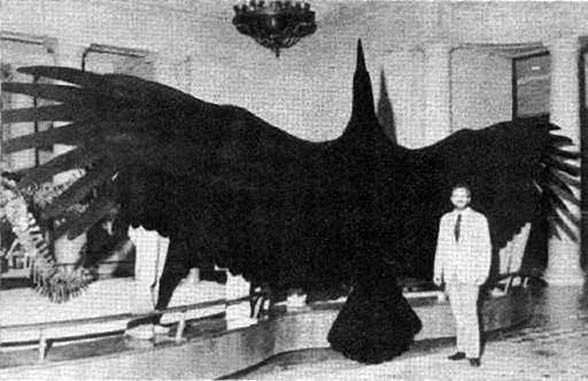
K-selection strategy
If the above information was true, it is possible for Argentavis to follow the so-called K-selection strategy – it is an example of an animal living in its own ecosystem with very little population fluctuations (relatively low reproductive rate). It prevents the species from the exhaustion of food supply, which is possible even for scavengers.
Following the K-selection strategy, these birds conceivably took care of the offspring for a very long, yet there were few young birds in a single hatch. This allowed the chick to have more time for healthy development, which was also intertwined with a low mortality rate among young birds. Argentavis probably laid 1 or 2 eggs at best, every weighing more than 1 kg (2.2 lb), with hatching taking place once every two years (as for modern birds of prey).
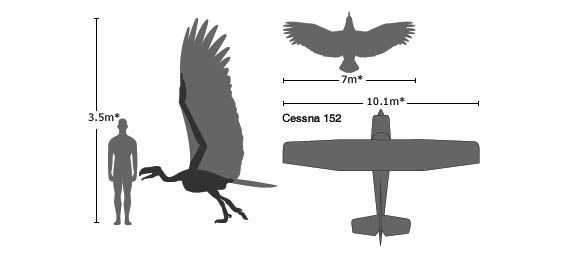
Detailed characteristics / size
Argentavis (Argentavis magnificens)
Size
- Torso length: 1.26 m (4.1 ft)
- Height: 1.7 – 2 m (5.6 – 6.6 ft)
- Wingspan: about 7 m (23 ft)
- Weight: 70 – 98 kg (154 – 216 lb)
- Wings area: 8.11 m2 ( 87 ft2)
Range
- Areas of occurrence: South America, present-day Argentina
- Dating: about 6 million years ago
- Epoch: Late Miocene
- Age: Messinian

Argentavis (Argentavis magnificens) – interesting facts
- The name of the species may be translated to ‘mighty/magnificent Argentinean bird’.
- Its wingspan was nearly as wide as the Cessna 152 plane.
- A similar wingspan had recently discovered Pelagornis sandersi 6.1 – 7.4 m (20 – 24 ft).
- Species closely related to Argentavis, equally impressive, inhabited the West Coast of North America not so long ago – they surely interacted with Homo sapiens.
- We cannot rule out the possibility of Argentavis living in a much wider habitat than we presume.
- This bird was known for its massive, strong legs and large feet, which made moving on the ground relatively easy. The beak was hook-shaped and substantially large.
- The discovery was made by E. Tonni and R. Pascual working for the La Plata National Museum in Argentina. The remains were found near the Salinas Grandes de Hidalgo in La Pampa province, about 640 km (398 mi) southwest of Buenos Aires. The find consisted of skull fragments, incomplete left humerus, radial bone, metacarpal bones, and tarsus bones.
- The main image obviously does not present the Argentavis as we were not able to take a photo of it during our expeditions (but we’re close 😉 )

Discussion / Podcast on Argentavis magnificens
Listen to a discussion of Argentavis magnificens – the largest flying bird in the history.
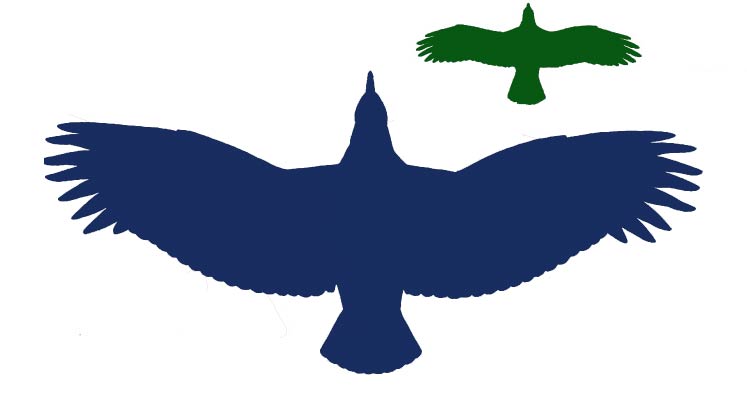
Recommended
- Extinct animals
- Eagles
- Animals records
- Largest eagles Top10
- Largest birds of prey Top10
- Haast’s eagle
- Bald eagle
- Black eagle
- Steller’s sea eagle
- Philippine eagle
- Crowned eagle
- Martial eagle
- Wedge-tailed eagle
- Eastern imperial eagle
- Steppe eagles
- Bearded vulture
- Fastest animals – Top 10
- Fastest birds – Top 10
- Most venomous snakes – Top 10
- Largest sharks Top 10
- Heaviest land animals
- Largest crocodiles Top 10
- Largest whales TOP 10
- Longest snakes Top 10
- Highest (Top) flying bird – Top 10
- Largest and heaviest birds
- Largest turtles TOP 10








